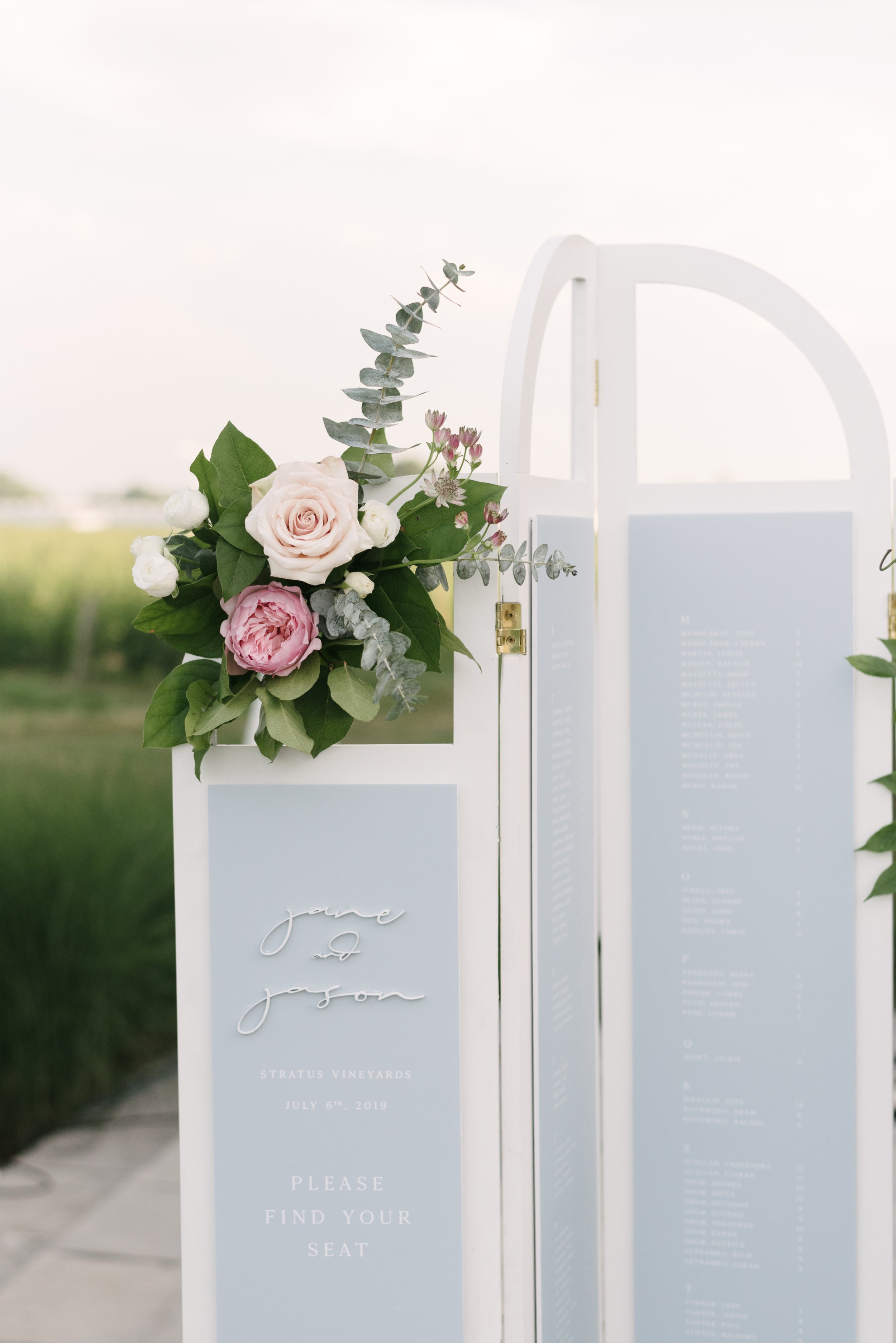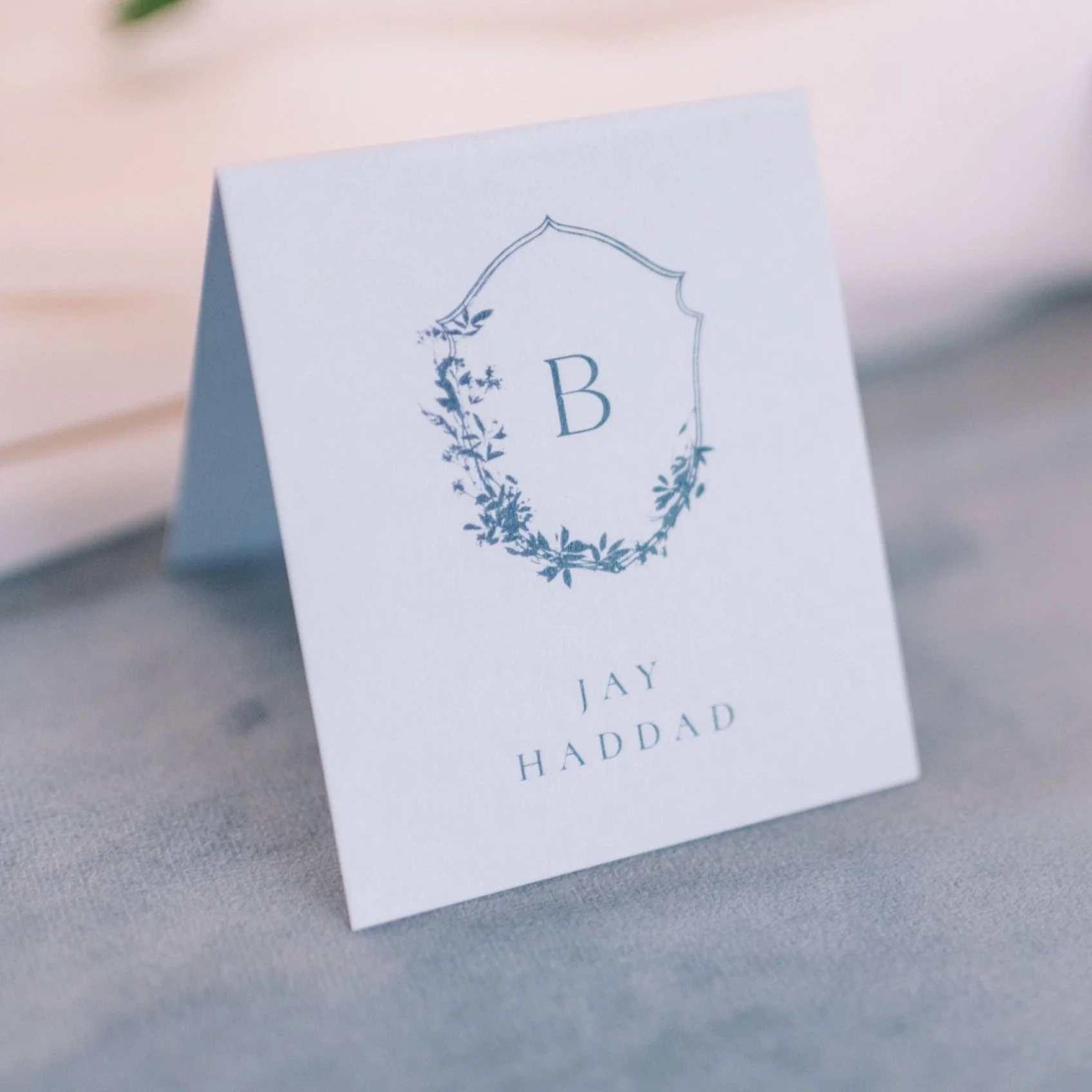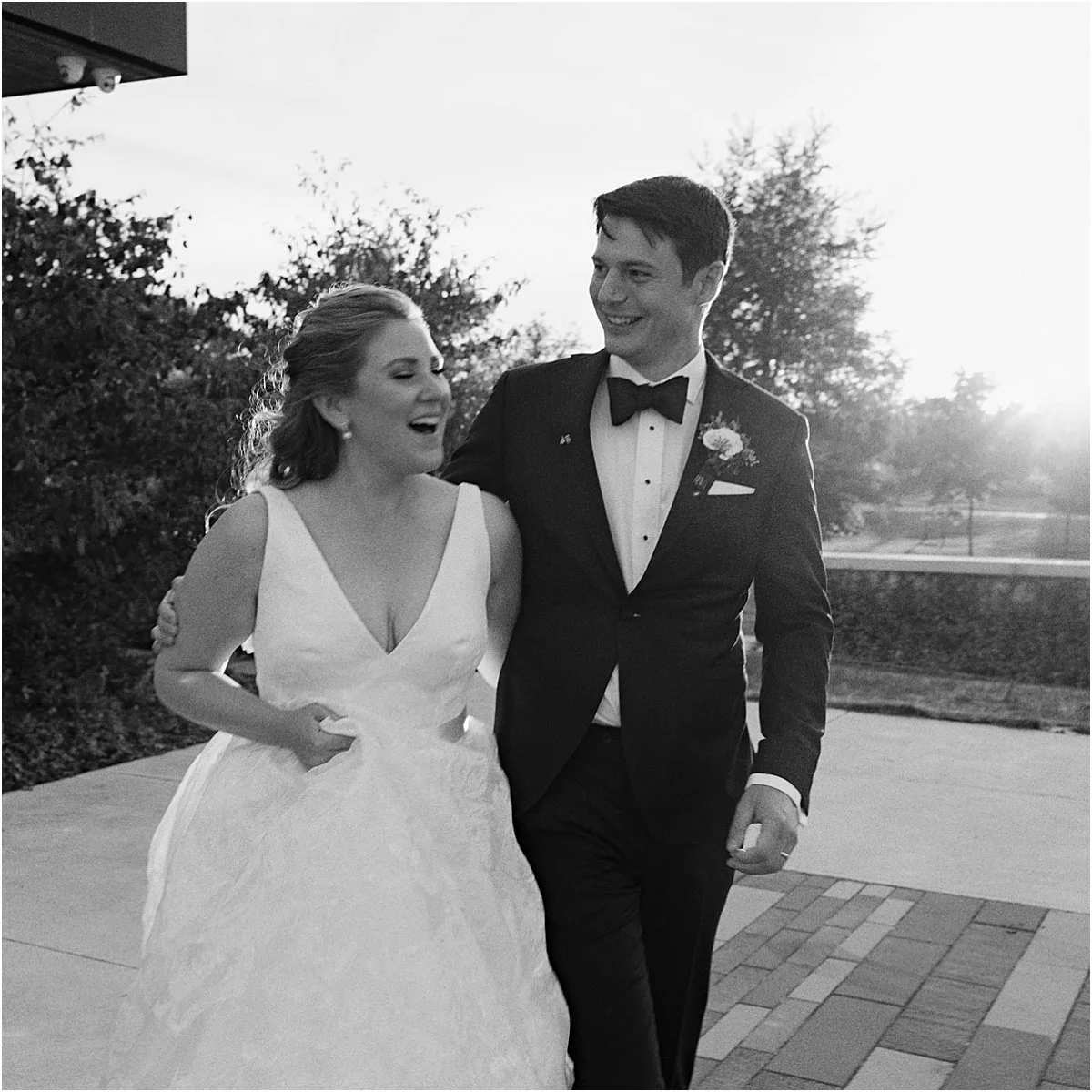What is the difference between a first look and an aisle reveal?
A “first look” is when couples see each other before the wedding ceremony. On the other hand, an “aisle look” is when couples first see each other walking down the aisle.
First Look
This is a moment for just the couple, before the ceremony, typically alone and away from guests, family or wedding parties. It is often a very intimate, emotional and beautiful moment between the couple and captured at a distance from their photographer and videographer. This moment allows couples to connect, share their excitement and be together without distractions. Some couples prefer this approach because it allows them to calm nerves, exchange personal vows, and have some quiet time together before the hustle and bustle of the ceremony and reception.
When you have a first look, you have a lot more freedom in your wedding day timeline. Couples have the ability to take their first look, wedding photos, couple portraits and photos with their wedding party all before the ceremony. Depending on how large your family is, couples can also do all of their family photos before the ceremony. What this means, is by the time your wedding ceremony comes around, the “work” is over. When you get photos done before the ceremony, you can head straight to cocktail hour. This way, you get to enjoy more time with your guests! This advantage alone is enough to make more traditional couples reconsider a first look.
And, we’ve heard from our clients that even with a first look, the moment of seeing each other as they walked down the aisle to each other was still just as special and emotional, just a little less nerve wracking.
Aisle Look
This is the more traditional approach where the couple see each other for the first time as one of them walks down the aisle during the ceremony. This moment is typically more public, with all of the guests witnessing the reaction of the couple as they see each other. It holds a special significance in many cultures and is often considered a highlight of the ceremony itself.
If not planning on seeing each other before the ceremony, couples often opt for an in-between: some will hold hands, or say a hello with a wall between to still have a moment together, without seeing one another. Don’t be afraid to find something “in-between” that works for you.
The biggest thing to consider for your timeline when staying traditional and doing an “aisle look” is leaving enough time after the ceremony to complete photos. Couples portraits, wedding party photos and family photos all need to be completed after the ceremony and may impact a couple’s ability to attend cocktail hour before the main reception. This is all do-able, and an experienced planner and photographer can make all of this happen without extending your cocktail hour too long.
As planners, we always start this conversation with couples with how relaxed they want to be that day, or how nervous they feel they will be. An “aisle look” can leave the day feeling a bit more rushed than a first look timeline, but it is always up to the couple what they’d prefer - there truly is no wrong answer!
To conclude, a wedding day should be a reflection of a couple’s unique vision, where they feel most comfortable and authentic. Ultimately, it is about creating a day that aligns with their dreams and allows them to celebrate their love exactly as they envision it! And a great planner will help achieve this, no matter what “look” you pick!
Ready for other helpful wedding planning tips? Click the button below!
























